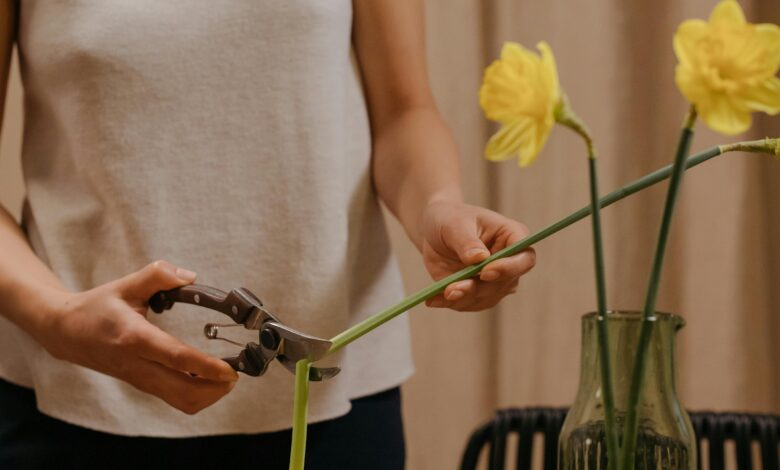15 Profitable Crafts That Make Money
Look, I’m going to be straight with you: if you’ve clicked on this article, you’re probably tired of hearing “follow your passion” without anyone telling you how to actually make money from it.
Selling crafts taught me that creativity can truly pay off. With patience, good presentation, and consistency, handmade items can turn into a real source of income.
It’s not just about making things it’s about creating value that others appreciate and are happy to support.
As someone with a finance degree and years of analyzing profitable business models, I’ve seen countless people turn their kitchen table hobbies into legitimate income streams.
So, let’s skip the fluff and get into the good stuff: 15 crafts that actually generate income, plus the financial know-how to make it work.
How Do I Get Started Selling Crafts?
Starting is often the hardest part not because it’s complicated, but because most people wait for the “perfect time” or “perfect product,” which never really comes.
The best way to begin is to start small and test the market. Make a few items and get honest feedback from people you trust.
Share them on social media or try selling at a local craft fair to see what catches people’s attention.
You don’t need a business plan or official registration right away. Just create, share, and observe. The market will show you what works you just have to listen and adjust.
Think of it as learning through doing.
Once you see what resonates, double down on that. Adjust your pricing, refine your process, and scale what’s working.
The beautiful thing about crafts? Your startup costs are typically low enough that you can afford to experiment without risking your rent money.
What Else To Consider Before You Sell Crafts For Money

Before you dive headfirst into your crafting empire, let’s talk about the stuff that separates hobbyists from actual business owners. Because here’s the truth: making pretty things is only half the battle.
Market Demands And Trends
I’m going to sound like your financial advisor for a second (because, well, that’s essentially what I am): loving your product doesn’t guarantee sales. You need to understand what people are actively searching for and willing to buy.
Are eco-friendly products having a moment? Is personalisation trending? Is there a seasonal spike you can capitalise on?
You don’t have to chase every viral trend, but ignoring market demand is like driving with your eyes closed; you might move forward, but you’re probably going to crash.
Use tools like Google Trends, browse Etsy’s trending items, or lurk in Facebook groups where your target customers hang out.
The more you understand demand, the less you’re creating blind and hoping someone bites.
Pricing & Profit Margins
Alright, this is where most crafters completely mess up, and it drives me absolutely nuts. They underprice their work to death because they’re scared of seeming “too expensive.”
Let me tell you something: underpricing doesn’t just hurt your wallet, it devalues the entire handmade market.
Here’s a formula I want you to tattoo on your brain:
Materials + Labor + Overhead + Profit = Your Price
Labour means paying yourself an actual hourly wage (at least $15-20/hour minimum).
Overhead includes everything from packaging to platform fees to electricity. And profit? That’s the 20-30% on top that makes this worth your time.
If someone won’t pay your fair price, they’re not your customer. Period.
There are plenty of people who understand the value of handmade work; those are the ones you want buying from you.
Quality And Consistency
Here’s a harsh truth: one beautiful product means nothing if you can’t replicate it. When customers buy handmade, they’re buying trust.
They’re trusting that what arrives at their door matches what they saw online, both in quality and appearance.
I’ve analysed hundreds of Etsy shops, and you know what separates the five-star sellers from the struggling ones?
Consistency. Every candle has the same burn time. Almost every piece of jewelry has the same finish. Every package arrives looking professional.
Create systems and processes that ensure quality control. Take detailed notes on your techniques.
Source reliable suppliers. Your reputation depends on delivering the same great experience every single time.
Time Commitment
Running a craft business is more than making pretty things, it’s taking photos, listing items, marketing, packaging, shipping, managing inventory, and handling messages and finances.
I’ve seen many talented crafters burn out because they underestimated how much time it takes.
Be realistic about your schedule. If you’re working or caring for family, set manageable goals: maybe ten custom orders a month or one production day a week.
Build a routine that fits your life instead of draining it.
Legal And Business Considerations
Depending on your location, you might need:
- A business license
- Sales tax permit
- LLC or business structure (for liability protection)
- Business insurance (seriously, don’t skip this)
- Proper tax tracking and quarterly payments
Check out SCORE for free business mentoring, or visit your local Small Business Development Centre.
Trust me, spending a few hours understanding the legal stuff now beats getting smacked with penalties later.
Marketing And Branding
Here’s where a lot of crafters roll their eyes, but listen up: in a saturated market, your brand is what makes people choose you over the hundreds of other sellers making similar products.
Your brand isn’t just a logo, it’s your vibe, your story, your packaging, your communication style, everything.
Are you the sustainable, earth-conscious crafter? The snarky, funny one? The elegant, luxury option? Figure out your lane and own it.
Start simple with social media. Instagram and Pinterest are goldmines for visual products.
Show behind-the-scenes content, share your process, and engage with your audience.
Building genuine connections turns browsers into buyers and buyers into repeat customers.
Shipping And Logistics
Nothing tanks your profit margins faster than poor shipping strategies.
I’ve seen crafters price their products perfectly, then lose money because they didn’t calculate shipping costs properly or had to replace damaged items.
Create a solid shipping plan:
- Research shipping carriers and rates (Pirate Ship offers great discounted rates)
- Invest in quality packaging that protects your items
- Build shipping costs into your pricing or charge separately
- Set clear policies for lost or damaged packages
- Consider offering tracking on all orders
The smoother your shipping process, the better your reviews, and those five-star ratings directly impact your sales.
15 Crafts That Make Money
Alright, enough with the prep work. Let’s get to what you actually came here for: the crafts that will fill your bank account.
These aren’t random suggestions; they’re proven money-makers backed by market demand and solid profit margins.
1. Wooden Crafts

There’s something about wood that just screams quality and longevity. Maybe it’s the natural aesthetic, or maybe it’s because people know wooden items last forever.
When I first started making wooden crafts, I began with simple cutting boards using leftover wood from a friend’s workshop.
My first few pieces weren’t perfect, but I posted them on Instagram and Facebook Marketplace.
Within two weeks, I sold five boards and had requests for personalized engraved ones.
That side hobby quickly turned into a steady $500 a month in extra income, all from my small garage setup.
Either way, wooden crafts consistently pull in impressive sales.
What makes wooden crafts profitable? The markup potential is beautiful. A cutting board that costs you $8-12 in materials can sell for $40-80. Rustic signs? $25 in materials, $75-150 retail.
Custom shelves, engraved pieces, personalised family name signs, the possibilities are endless.
Popular wooden items include:
- Charcuterie boards (these are hot right now)
- Rustic home décor signs
- Floating shelves
- Kitchen utensils
- Engraved keychains and ornaments
You’ll need basic woodworking tools to start, nothing crazy expensive. As you grow, you can invest in a laser engraver or CNC machine to really elevate your game.
Check out Rockler or Woodcraft for quality supplies.
Startup investment: $200-600 Profit potential: $1,000-8,000/month
2. Hand-Painted Signs
A few years ago, I helped a friend paint a custom “Welcome Home” sign for her sister’s wedding.
The photos from that event got shared online, and soon I had messages from strangers asking if I could make similar ones.
I opened a small Etsy shop and sold over 100 signs in my first year.
What started as a favor became a fun weekend business that still brings in extra cash.
Hand-painted signs are perfect for people who love lettering and have a steady hand (or are willing to practice until they do).
These babies sell like crazy for home décor, weddings, events, and small business branding.
The beauty of signs? They’re highly customizable, which means you can charge premium prices.
A generic “Welcome” sign might sell for $35, but a custom family name sign with specific colors and dates? That’s $75-120 easily.
What’s selling:
- Welcome signs for porches
- Wedding signage packages
- Seasonal holiday décor
- Funny kitchen or bathroom quotes
- Nursery name signs
Your startup costs are minimal: wood boards, quality paint, brushes, and maybe some stencils if your freehand needs backup.
The real skill is in the design and execution. Clean lines, balanced layouts, and on-trend aesthetics separate amateur signs from professional ones.
Startup investment: $100-300 Profit potential: $800-5,000/month
3. Customised Tote Bags
During the lockdown, I started designing tote bags for fun using fabric paint and a basic iron-on press.
My first batch had funny quotes like “Introverted but willing to discuss dogs.”
I listed them on Etsy, and they sold out in a week.
I later invested in a heat press and Cricut cutter, allowing me to take bulk orders for school events and weddings.
That turned a $100 experiment into a $2,000-a-month income stream.
Tote bags are having their moment, and it’s not ending anytime soon. Between the eco-conscious movement and people’s obsession with cute, practical accessories, customised totes are money-makers.
The profit margins here are fantastic. A plain canvas tote costs $2-5. Add your design using iron-on vinyl, screen printing, or embroidery, and suddenly you’re selling it for $18-35.
That’s some math I can get behind.
Best-selling tote designs:
- Witty quotes and puns
- Floral and botanical prints
- Pet-themed illustrations
- Teacher appreciation designs
- Bride tribe and bachelorette party bags
You can go super low-tech with fabric paint or level up with a heat press and vinyl cutter.
Once you’ve got your designs dialed in, offer bulk orders for events, businesses, or wedding parties. That’s where the real money lives.
Startup investment: $150-400 Profit potential: $600-4,500/month
4. Embroidery

Embroidery might seem old-school, but it’s making a serious comeback, and the personalisation potential is off the charts.
I learned embroidery from my grandmother and decided to modernize it by creating pet portrait hoops.
I posted a few examples on social media, and pet owners loved them.
Within a few months, I had more orders than I could handle.
One Christmas season alone, I made over $3,000 selling personalized embroidered gifts.
All of it happened from my living room.
From monogrammed handkerchiefs to custom hoop art, people love the handcrafted detail that embroidery provides.
What makes embroidery profitable: The time investment gets easier as you improve, and people understand that detailed needlework takes skill.
That means they’re willing to pay for it. Plus, embroidery has low material costs but high perceived value.
Hot sellers include:
- Personalised wedding handkerchiefs
- Embroidered hoop art for nurseries
- Custom patches and pins
- Monogrammed linens
- Pet portrait embroidery
You can start with basic hand embroidery or invest in an embroidery machine if you want to scale.
Machines like those from Brother or Janome make production faster once you’re getting consistent orders.
Startup investment: $100-1,500 (depending on hand vs. machine) Profit potential: $500-6,000/month
5. Customised Pet Accessories
My first pet accessory was a personalized collar I made for my dog, Max.
I shared a photo on Instagram, and it caught the attention of a few pet lovers.
After making a few for friends, I opened a small online store.
The turning point came when a local pet boutique started stocking my bandanas.
By the end of the year, I was earning over $4,000 monthly.
That was proof that pet parents will always spend on something unique for their furry friends.
Why pet accessories print money: People view their pets as family members, which means they’re willing to spend on quality, personalised items.
Plus, pet products have great repeat purchase potential, dogs outgrow collars, cats destroy toys, and owners love collecting seasonal bandanas.
Money-making pet items:
- Personalised collars and leashes
- Custom pet bandanas
- Hand-sewn pet outfits
- Treat jars with pet names
- Memorial items (sensitive but profitable niche)
The startup costs are reasonable, and you can work with fabric, vinyl, leather, or even wood. Once you establish your brand, pet owners become incredibly loyal customers.
One seller I follow makes over $4,000/month just from custom dog bandanas. Wild, right?
Startup investment: $150-500 Profit potential: $700-5,500/month
6. Handmade Soaps And Bath Products
The bath and body market is absolutely booming because people are ditching chemical-laden products for natural, handmade alternatives.
If you can make soap that smells amazing and doesn’t irritate skin, you’ve got yourself a business.
I started making soap after getting tired of buying expensive “natural” brands that didn’t work well.
I followed a few YouTube tutorials and made lavender-scented bars as gifts for friends.
The feedback was incredible, and people started asking to buy them.
Within months, I was selling handmade soap sets at local markets and online.
Eventually, I grew it into a small bath brand that made over $5,000 during the holiday season alone.
The profit margins on soap are insane. A bar that costs $1.50-2.50 to make sells for $8-12. Bath bombs? Even better margins.
Body scrubs, shower steamers, and shampoo bars, all high-demand products with serious profit potential.
What’s flying off virtual shelves:
- Goat milk soap
- Activated charcoal bars
- Exfoliating coffee scrubs
- Luxe bath bomb sets
- Zero-waste shampoo bars
The key is using quality ingredients and nailing your branding. You’re not just selling soap, you’re selling self-care, relaxation, and wellness. Package it beautifully, photograph it professionally, and create a cohesive brand story.
Check out Bramble Berry for supplies and amazing tutorials. They’ve got everything you need to start, plus recipes tested by pros.
Startup investment: $200-500 Profit potential: $1,000-7,000/month
7. Handmade Jewellery
Jewellery is one of those classic crafts that never goes out of style because everyone needs accessories. The beauty of handmade jewellery?
You can work with countless materials and techniques, finding the perfect fit for your skills and budget.
Why jewellery is wildly profitable: It’s lightweight (cheap shipping), has high perceived value, and people collect it.
Once someone loves your style, they’re back for matching pieces or gifts for friends. You’re building a customer base with every sale.
I began making beaded bracelets during my college days just to relieve stress.
One day, I wore one to class, and three people asked to buy the same design.
I decided to post them online and got my first 20 orders that same week.
Over time, I expanded into resin earrings and name necklaces.
Eventually, I turned my hobby into a full-time handmade jewelry brand that now sells worldwide.
Popular jewellery categories:
- Minimalist everyday pieces
- Statement earrings
- Personalised name necklaces
- Resin jewellery with flowers or glitter
- Wire-wrapped gemstone pendants
You can start with simple beading or dive into metalworking, resin casting, or polymer clay.
The startup costs vary wildly depending on your chosen technique, but even basic jewelry can command premium prices if it’s well-designed and on-trend.
Startup investment: $75-600 Profit potential: $500-8,000/month
8. Candles

Candles are emotional products, and I mean that in the best way possible. They’re about creating atmosphere, triggering memories, and setting moods.
That’s why people will drop $30 on a candle without blinking.
The profit potential on candles is ridiculous. A candle costing $4-6 to make sells for $22-35.
And if you create signature scents or niche collections (think astrology signs, book-themed, or affirmation candles), you can charge even more.
What’s selling:
- Soy wax candles (eco-friendly angle)
- Wooden wick candles (that crackling sound)
- Seasonal scent collections
- Funny or sarcastic label designs
- Luxury candles in unique vessels
Start with basic supplies from CandleScience or Aztec Candle. Test your scent combinations obsessively; this is where you differentiate yourself.
Nobody needs another “vanilla” candle, but a “Sunday Morning Pancakes” candle? Now we’re talking.
Startup investment: $150-400 Profit potential: $1,200-10,000/month
9. Customised T-Shirts
The custom apparel game is massive, and it shows zero signs of slowing down. People want shirts that express their personality, beliefs, hobbies, or sense of humour.
If you can nail a specific niche, you’re golden.
What makes t-shirts so profitable? You can use print-on-demand services (zero inventory risk) or invest in equipment to print yourself (higher margins). Either way, the market is hungry for clever designs and niche-specific shirts.
Profitable t-shirt niches:
- Sarcastic parent humour
- Occupation-specific (nurses, teachers, mechanics)
- Pet breed enthusiasts
- Hobby communities (hiking, knitting, gaming)
- Faith-based messaging
Use platforms like Printful or Printify for print-on-demand, or grab a heat press and start printing yourself.
The design is everything; invest time in creating graphics that speak directly to your target audience.
Startup investment: $0-600 (depending on method) Profit potential: $500-7,000/month
10. Upcycled Furniture

Upcycled furniture is for the crafters who have space, tools, and an eye for transformation. This isn’t quick money; furniture takes time, but the profit per piece can be substantial.
We’re talking about buying a beat-up dresser for $20 and selling it for $300+.
What makes furniture upcycling profitable: You’re creating one-of-a-kind pieces that people can’t find anywhere else.
Plus, there’s a huge market for sustainable, unique furniture among millennials and Gen Z who hate mass-produced stuff.
Best upcycle projects:
- Refinished dressers and cabinets
- Reupholstered vintage chairs
- Painted and distressed tables
- Repurposed wooden pallets
- Mid-century modern makeovers
You’ll need workspace (garage, shed, or even a large patio) and basic tools. Scour estate sales, thrift stores, and Facebook Marketplace for pieces with good bones.
The transformation is where you add value, and where customers happily pay premium prices.
Startup investment: $300-1,000 Profit potential: $1,500-6,000/month
11. Personalised Stickers
Don’t underestimate stickers. These little guys have massive profit margins and an enormous market.
From planner addicts to laptop decorators to small business owners using them for packaging, everyone wants stickers.
The economics of stickers are beautiful: A sheet that costs $0.40-1.00 to produce sells for $3-6. Individual die-cut stickers? Even better margins.
Plus, people buy them impulsively and collect them, meaning repeat customers are common.
What’s trending:
- Planner and journal stickers
- Pop culture and fandom references
- Mental health and self-care themes
- Small business branding stickers
- Quirky and meme-inspired designs
Invest in a Cricut or Silhouette cutting machine and quality vinyl or sticker paper. Design in Canva or Adobe Illustrator, print, cut, and watch them sell.
The barrier to entry is low, but the profit potential is high if you find your niche.
Startup investment: $200-500 Profit potential: $400-5,000/month
12. Leather Goods
Leather crafting is for the artisans who want to create heirloom-quality products. The startup investment is higher than some other crafts, but the profit potential matches.
People understand that quality leather goods last for decades, so they’re willing to invest.
Why leather works financially: Your cost per item might be $10-20, but you’re selling for $60-300+, depending on the piece.
That ROI is hard to beat. Plus, leather goods scream quality and craftsmanship.
High-profit leather items:
- Wallets and cardholders
- Belts with custom buckles
- Leather tote bags and purses
- Watch straps
- Journals and notebook covers
You’ll need leather working tools (punches, knives, stitching supplies) and quality leather. Tandy Leather is the go-to for supplies and tutorials.
The learning curve exists, but once you’ve mastered basic techniques, you can produce stunning pieces that justify premium pricing.
Startup investment: $400-1,000 Profit potential: $1,200-9,000/month
13. Handmade Stationery
In a world of texts and emails, beautiful stationery feels extra special. Handmade greeting cards, journals, notepads, and wedding invitations have a market of people who still value the tangible and personal.
Stationery profit margins are solid. A handmade card costing $1.50 to produce sells for $5-8. Wedding invitation suites? You can charge $300-800 for custom designs.
The key is quality paper, unique designs, and excellent printing or hand-lettering.
What sells in stationery:
- Custom wedding invitations
- Birthday and celebration cards
- Thank you note sets
- Bullet journals and planners
- Watercolour art prints
You can start with cardstock, nice pens, and watercolours or invest in a small printing setup.
Specialize in a style, minimalist, watercolor floral, bold modern, or vintage-inspired, and become known for that aesthetic.
Startup investment: $150-500 Profit potential: $500-4,000/month
14. Hand-Painted Ceramics
Hand-painted ceramics combine functionality with art, which is why people love them. A coffee mug isn’t just a mug when it’s hand-painted with a unique design; it’s a daily experience.
Ceramics are profitable because: People use them daily, they make great gifts, and they’re collectable.
Someone buys one mug, loves it, then comes back for the matching bowl set. You’re building product ecosystems.
Popular ceramic items:
- Coffee mugs with quotes or designs
- Pasta bowls and dinner plates
- Pet bowls with names
- Planters for succulents
- Serving platters for entertaining
You’ll need access to ceramics (buy blank pieces or throw your own if you have a kiln), ceramic paints, and a good eye for design.
Etsy is full of successful ceramic artists charging $25-80 per mug. That’s serious profit for something people use every single day.
Startup investment: $200-1,500 (higher if buying a kiln) Profit potential: $800-6,000/month
15. Knitted And Crocheted Goods
Knitting and crocheting are labour-intensive crafts, which means you can charge accordingly.
People understand that a hand-knitted blanket represents hours of work, and they’re willing to pay for that dedication.
Why knitwear is profitable: The time investment justifies high prices. A baby blanket that takes 10-15 hours to make can sell for $80-150.
Chunky knit blankets? Try $200-400. Those are numbers that make the time investment worthwhile.
Best sellers in knitwear:
- Baby blankets and clothing
- Chunky throw blankets
- Beanies and scarves (seasonal gold)
- Market bags and totes
- Pet sweaters (seriously, these sell)
The key is pricing correctly. Don’t underprice because “it’s just yarn.” Your time, skill, and the finished product’s quality deserve fair compensation. Winter is your peak season, so plan inventory accordingly.
Startup investment: $100-300 Profit potential: $600-5,000/month
Where To Sell Crafts Online
You’ve got your craft dialled in, now you need customers. Choosing the right platform can make or break your success because each one has different audiences, fee structures, and features.
1. Etsy
Etsy is the OG of handmade marketplaces. It’s where millions of people go specifically to buy handmade, vintage, and unique items.
The built-in traffic is massive, which is both a blessing and a curse; lots of potential customers, but also tons of competition.
Etsy fees: $0.20 listing fee + 6.5% transaction fee + 3% payment processing fee
The key to Etsy’s success is SEO. Use all your tags, write detailed descriptions with keywords, and have stellar photos. Stand out or get buried, those are your options.
2. Amazon Handmade
Amazon Handmade gives you access to Amazon’s insane customer base while focusing on artisan goods. No listing fees, which is nice, but they take a 15% referral fee on sales.
The advantage? People trust Amazon, shipping is streamlined, and the traffic potential is enormous. The downside? You’re competing with Amazon’s entire marketplace, and the artisan vibe isn’t as strong as Etsy.
3. Shopify
Shopify is for crafters ready to build their own brand and website. You control everything: the design, customer experience, email marketing, everything. It’s your kingdom.
Monthly costs: $39-399 depending on plan
The trade-off is that you’re responsible for driving all your own traffic. But if you’re serious about building a real business with brand recognition, Shopify is the move. You’re not just another seller in a marketplace, you’re THE brand.
4. Big Cartel
Big Cartel is perfect for small-scale crafters who want simplicity. It’s designed specifically for artists and makers, with easy setup and no complicated features you don’t need.
They have a free plan for up to 5 products, making it perfect for testing the waters. Paid plans start at just $9.99/month, which is super affordable for those starting.
5. Squarespace
Squarespace is all about beautiful design. If your craft is highly visual and you want a stunning website that showcases your work like art, Squarespace delivers.
Monthly cost: $18-49 for e-commerce plans
The templates are gorgeous right out of the box, and you can integrate a blog to boost your SEO. Great for crafters building a lifestyle brand around their products.
6. Wix
Wix offers tons of customisation with a drag-and-drop builder. It’s user-friendly but gives you more control than most simple platforms.
You can integrate with Instagram and Facebook for social selling, plus they’ve got solid SEO tools.
Plans start around $17/month for e-commerce, making it accessible for crafters at any level.
Final Thoughts
Building passive income takes effort at the start, but the rewards are worth it.
It taught me that financial independence isn’t about working harder, it’s about working smarter.
With the right mindset and patience, any woman can create steady income streams that bring peace, balance, and freedom
The people making six figures from crafts? They’re the ones who mastered both the art and the business.
You can absolutely be one of them. Now go make it happen.









